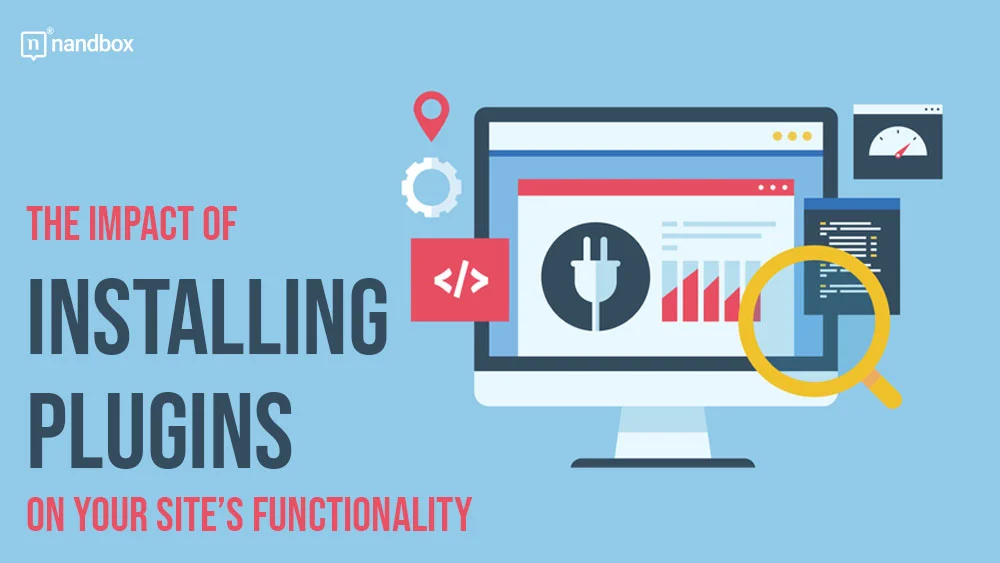Plugins are powerful tools for website customization. They offer features and functionalities that can enhance both the user experience and back-end efficiency. But while installed plugins can be beneficial, they can also pose challenges if not chosen carefully. For beginners managing their websites and Installing Plugins, understanding the role of plugins and how they affect site performance is essential for building a robust online presence.
To fully grasp their impact, it’s helpful to first understand what plugins are and the specific roles they play in website functionality.
Understanding Plugins and Their Role
Plugins are software add-ons that allow website owners to add new features without extensive coding knowledge. They range from tools for social media sharing, security enhancements, SEO improvements, and e-commerce functionality to website design elements. Each plugin is developed for a specific function, which means it can help achieve particular website goals with ease.
However, because plugins are created by various developers, they vary widely in quality, coding standards, and compatibility. As a result, adding new plugins without understanding their impact can lead to unwanted issues.
Advantages of Plugins
Plugins provide a range of tools for site owners, allowing them to add functionality without complex development.
1. Enhanced capabilities: Plugins allow website owners to add new features easily. For instance, an SEO plugin can help optimize web pages for search engines, improving visibility and attracting more traffic.
2. Improved user engagement: Plugins that add comment sections, social sharing buttons, or navigation features can make a site more interactive. Enhancing user experience can increase visitor retention and satisfaction. For Shopify store owners looking to stand out, the Picked Shopify Plugin or any of your choices is an excellent pick for a new plugin. It helps get products noticed by customers, increasing the likelihood of higher engagement and conversions by making your brand and products more visible.
3. Increased efficiency: Automating tasks such as updates, content management, or basic security checks saves time and streamlines website operations, allowing owners to focus on other areas of site management.
When used thoughtfully, plugins can significantly elevate a website’s usability and visitor appeal. However, it’s essential to weigh these advantages against potential issues that additional plugins might introduce.
Disadvantages of Plugins
Despite their benefits, plugins come with certain risks that can affect website functionality and security.
1. Slower loading times: Plugins add scripts and code to a website, which can affect load speed. Each active plugin adds to the resources required, potentially slowing down the site if too many plugins are in use.
2. Compatibility problems: Plugins need to work seamlessly with each other and with the site’s theme. Conflicts between plugins or themes can lead to errors or broken website functions, frustrating visitors.
3. Security vulnerabilities: If a plugin is poorly coded or outdated, it may create a security risk. Plugins that are not regularly updated or well supported can leave a website exposed to potential threats.
Knowing both the benefits and drawbacks helps users approach plugin installation more cautiously, reducing risks and maximizing functionality.
How Plugins Affect Site Performance
Website performance directly impacts user experience, SEO rankings, and conversion rates. Understanding how plugins influence these elements is critical for optimizing a website’s functionality.
Loading Speed
Plugins add scripts, styles, and database queries that can increase the time it takes for a site to load. For instance, a single plugin that adds dynamic content may not affect speed significantly, but multiple plugins doing similar tasks can cause delays. Slow load times can lead to higher bounce rates, as users often leave sites that take too long to load. Tools like Google PageSpeed Insights can help measure loading speed and pinpoint plugins that may slow your site.
Database Performance
Many available plugins store data in the website’s database. Over time, this can lead to a bloated database if the plugin is not optimized. This increase in stored data can slow down database queries, leading to sluggish performance. For example, plugins that track user behavior or manage inventory for e-commerce sites can accumulate data rapidly, which may affect overall website responsiveness.
Server Resource Consumption
Web servers have limits on processing power, memory, and bandwidth. Plugins, especially those that frequently update, make API calls, or process user data, can place high demands on these resources. In some cases, excessive plugin use may lead to server crashes or force a hosting upgrade to accommodate the extra load.
Monitoring how plugins impact these performance areas helps ensure a fast, efficient, and user-friendly site. Careful plugin management can reduce strain on server resources, maintain optimal loading speeds, and keep databases running smoothly.
Common Mistakes When Using Plugins
Knowing what to avoid can save time, money, and frustration when using plugins on a website.
Installing Too Many Plugins
One common error is overloading a website with plugins. While plugins can offer great functionality, using too many may lead to complications, especially if they overlap in purpose. For instance, using multiple SEO plugins or several security tools can result in conflicting code that harms site performance instead of enhancing it.
Not Regularly Updating Plugins
Another common mistake is neglecting updates. Plugin developers release updates to fix bugs, improve compatibility, and address security vulnerabilities. Failing to update plugins regularly may expose a website to security threats or compatibility issues.
Relying on Unverified Plugins
It may be tempting to use free plugins from unverified sources, but doing so poses risks. These plugins may lack security checks or proper coding standards, making them susceptible to malware. Always choose plugins from reputable sources or platforms with user reviews and ratings to ensure reliability.
Avoiding these common mistakes can help maintain a website’s stability, security, and performance. Thoughtful plugin selection and regular maintenance are key steps toward a smooth-running site that meets user expectations.
Best Practices for Managing Plugins
To avoid issues with Installing plugins, follow these best practices when choosing and managing them effectively.
Limit Plugin Use
Assess each plugin’s purpose carefully before installation. If a website feature can be achieved with custom code or by optimizing existing elements, consider those options first. Fewer plugins mean fewer compatibility issues and better performance. Additionally, all active plugins should be reviewed regularly to see if they are still necessary.
Choose Quality Over Quantity
Opt for high-quality plugins that have positive reviews, regular updates, and responsive support. Reputable plugins often come with documentation, which can be useful if issues arise. Research before adding a plugin by reading user feedback and checking for updates from the developer.
Test Plugins in a Staging Environment
Before adding a plugin to a live site, test it in a staging environment. This allows for troubleshooting without risking the site’s functionality. For example, testing can reveal if a plugin causes a theme conflict or if it requires more server resources than anticipated. Many web hosts offer staging environments as part of their service, making this step easier to implement.
Following these best practices helps maintain a reliable, high-performing site while minimizing the risks plugins can introduce. Careful selection, routine reviews, and testing in safe environments ensure that plugins enhance rather than hinder a website’s functionality.
Examples of Plugin-Induced Issues and Their Solutions
Seeing examples of common plugin-related issues can help users better understand potential pitfalls and prepare for them.
Slow Loading Times Due to Image Optimization Plugins
Image optimization plugins can compress images, improving load speed. However, some may cause slowdowns by constantly reprocessing images. Installing plugins with lazy loading options or manually optimizing images before uploading can prevent such issues.
Security Risks from Outdated Security Plugins
A security plugin is essential, but an outdated one can do more harm than good. For instance, older versions may lack protection against recent threats. Choosing plugins that are actively maintained and updating them regularly is a simple but effective strategy.
E-commerce Site Conflicts with Payment Gateways
E-commerce plugins often integrate with payment gateways, but sometimes these connections fail due to plugin updates. If an online store faces such issues, working with Installing Plugins that are widely compatible with major payment providers can help. It’s also beneficial to monitor plugin forums for common compatibility fixes.
Understanding these examples equips site owners to tackle similar issues effectively, preserving site functionality and user experience. Proactive management and selecting well-maintained plugins can prevent common pitfalls and ensure smoother website operations.
Conclusion
Plugins are valuable tools that allow website owners to add functionality and improve the user experience without extensive coding. However, each plugin added to a website affects its performance in some way. By carefully selecting plugins, updating them regularly, and monitoring their impact on the site, users can enjoy the benefits of plugins without compromising website performance. With thoughtful management, Installing Plugins can be a powerful asset in creating an effective and user-friendly website.





